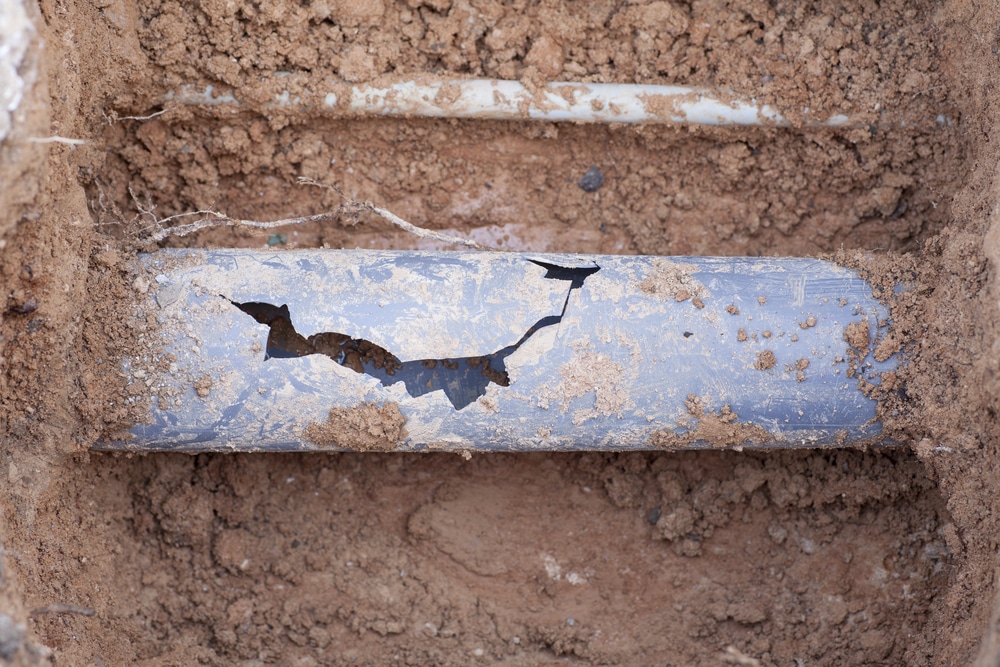
Your sewer line is responsible for transporting wastewater away from your house and keeping your living space sanitary and free from unpleasant odors. When this line breaks, it can lead to significant problems that affect not only your home’s plumbing system but also your yard and even the structural integrity of your home. Knowing how to identify signs of sewer line problems can save you time, money, and stress by allowing you to address issues before they become severe. Let’s take a closer look at common signs of a broken sewer line.
Persistent Drain Clogs
One of the most common signs of a broken sewer line is persistent drain clogs. While the occasional clog in a single drain is normal and can often be fixed with routine drain cleaning, frequent blockages in multiple drains throughout your home could signal a more serious issue with your sewer line. So, if you find yourself constantly reaching for a plunger or drain snake, it’s time to call a professional plumber.
Foul Odors
A properly functioning sewer system should contain and transport waste away from your home without any noticeable odors. If you start detecting persistent, unpleasant smells around your property, your sewer line is likely compromised.
Indoors, you might notice the smell near drains, in basements, or even seeping through walls. Outdoors, the odor might be particularly noticeable near the location of your sewer line or in areas where water tends to pool. Don’t ignore these smells or try to mask them with air fresheners — they’re your nose’s way of alerting you to potential sewer line damage that needs immediate attention.
Slow Draining Fixtures
If the drains in your home are taking longer than usual to clear, it might be more than just a simple clog. This widespread issue often indicates that there is a blockage or break in the main sewer line that is preventing wastewater from flowing freely. Ignoring this problem can lead to more severe issues, such as sewage backup or damage to your plumbing system, so request a sewer line repair as soon as possible.
Sewage Backup
Perhaps one of the most alarming and unmistakable signs that your sewer line is broken is sewage backup. This occurs when wastewater is unable to flow away from your home through the damaged sewer line and instead begins to come back up through drains, toilets, or floor-level cleanup drains in basements.
Sewage backup is not only incredibly unpleasant but also poses serious health risks due to the bacteria and contaminants present in raw sewage. If you experience this issue, it’s crucial to avoid contact with the contaminated water and immediately contact a professional plumber. A sewage backup requires swift action to protect your health and property.
Soggy or Sunken Areas in the Yard
Your yard can provide valuable clues about the state of your underground sewer line. If you notice unexplained wet or soggy patches in your lawn, especially during dry weather, it could be a sign that your sewer line is leaking underground. Over time, these leaks can create sunken areas or indentations in your yard as the soil is eroded by the constant moisture.
Pay particular attention to any unusual changes in the landscape along the path where your sewer line runs. These wet spots not only indicate a potential sewer line break but can also create hazardous conditions in your yard, as the saturated ground becomes unstable and prone to sinkholes.
Mold or Mildew Growth
While mold and mildew can have various causes, unexpected or persistent growth, especially in basements or along the ground floor of your home, can be a sign of a broken sewer line. When a sewer line leaks, it introduces excess moisture into the surrounding environment, creating ideal conditions for mold and mildew to thrive. This growth often appears on walls, floors, or ceilings closest to the damaged section of the pipe.
Not only is mold unsightly, but it can also pose health risks, particularly for individuals with respiratory issues or allergies. If you’re battling recurring mold problems despite your best efforts to control moisture in your home, it’s worth investigating whether a compromised sewer line might be the culprit.
Cracks in the Foundation
A broken sewer line can have far-reaching consequences, even affecting the structural integrity of your home. When a sewer line leaks or breaks near your home’s foundation, it can cause the soil to shift, expand, or erode. This movement can lead to cracks in your foundation walls or floor. If you suspect your sewer line is damaged or broken, schedule plumbing repair services as soon as possible to protect your home.
Insect Infestations
An often-overlooked sign of a broken sewer line is an increase in insect activity around your home. Pests like rats, mice, cockroaches, sewer flies, and mosquitoes are attracted to the moisture and organic matter found in sewage. If your sewer line is compromised, you might notice an uptick in insect populations in your yard, particularly near the areas where the sewer line runs. Inside your home, you may see more bugs than usual, especially in basements or ground floor areas. Call a professional plumber to inspect your underground pipes if you’re having issues with increased insect infestations.
Greener Grass Patches
While a lush, green lawn is usually a point of pride for homeowners, isolated patches of unusually vibrant grass can actually be a red flag for sewer line problems. When a sewer line breaks or leaks, it releases nutrients into the surrounding soil. These nutrients act like fertilizer, causing the grass directly above the leak to grow faster and appear greener than the rest of your lawn. If you notice a strangely vibrant strip or patch of grass, especially if it aligns with the path of your sewer line, it’s worth investigating further.
Unexplained Increase in Water Bills
Your monthly water bill can be a valuable indicator of hidden plumbing issues, including a broken sewer line. If you notice a sudden and unexplained spike in your water usage (and consequently, your bill), it could be due to water leaking from a damaged pipeline. This increase might be gradual if the leak is small or dramatic if there’s a significant break. Monitoring your water usage and bills regularly can help you catch potential issues early and save you money.
Steps to Take If Your Sewer Line Is Broken
Now that you know how to tell if your sewer line is broken, it’s important to familiarize yourself with the steps you need to take to repair the issue:
- Don’t Ignore the Signs: The longer you wait, the worse the damage will become.
- Avoid Using Water: Minimize water usage in your home to prevent further damage or backups.
- Document the Issues: Take photos or videos of the problem for your records and to show the professionals.
- Contact a Professional: Reach out to an experienced plumbing company like TKO Plumbing Services for a thorough inspection.
- Get a Camera Inspection: A professional can use specialized equipment to visually inspect your sewer line and pinpoint the exact location and nature of the problem.
- Explore Repair Options: Depending on the extent of the damage, repairs might range from simple spot fixes to full line replacements.
- Consider Preventive Measures: Once repaired, discuss sewer line maintenance strategies with your plumber to prevent future issues.
Get Your Sewer Line Repaired by the Pros at TKO
If you’ve noticed any of these issues in your home, don’t hesitate to seek professional help. TKO Plumbing Services specializes in diagnosing and repairing sewer line problems and offers expert solutions to keep your home’s plumbing in top condition. Contact our experts today for a comprehensive inspection and reliable sewer line repairs in Marietta, GA, and the surrounding areas.







